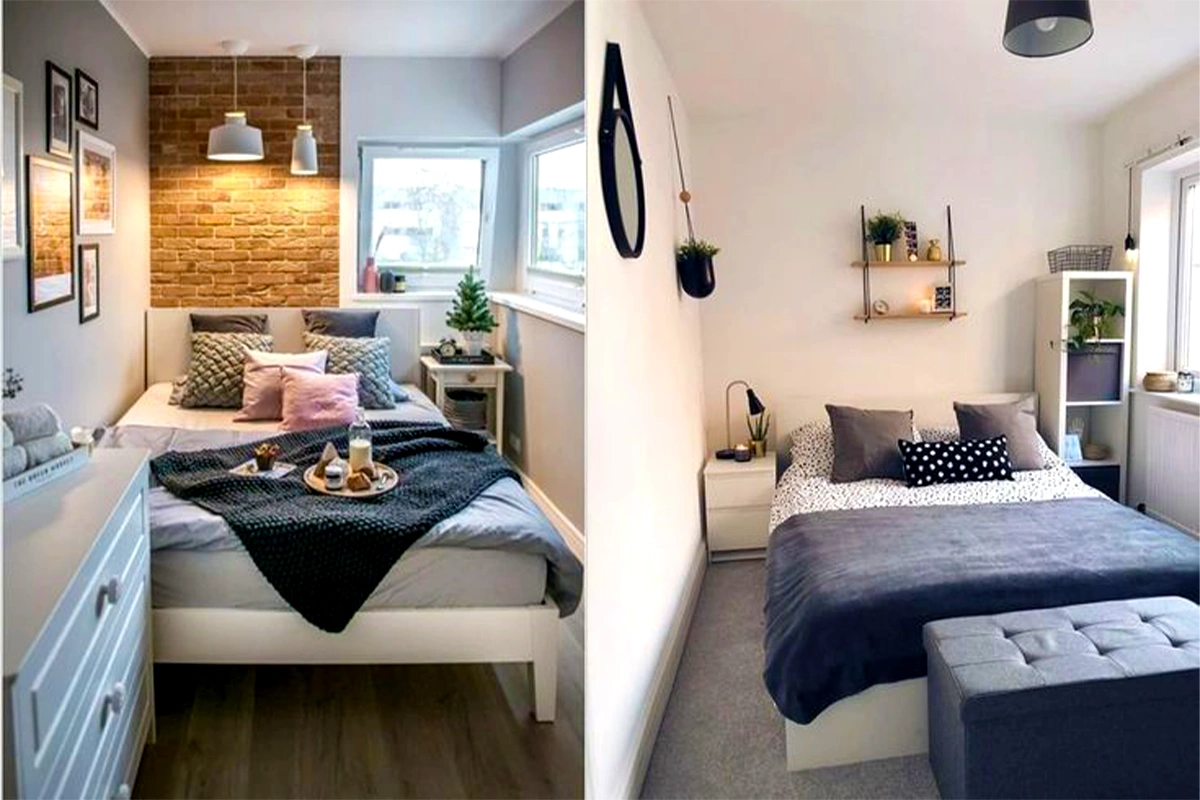When you are an urban citizen, it’s up to 70% that you will have a small bedroom. Designing interiors for a small bedroom requires a careful selection of furniture to maximize functionality and space. In this article, I would like to share with you some furniture that will help your bedroom look more attractive and wider.
Types of Bed for limited space bedroom
For the bed, we have some common options such as platform storage, Ottoman, Sofa, and Murphy beds. Each type of bed will have its unique features, but in general, all of them will help to optimize the space.
- Platform storage beds: This type of bed has built-in drawers underneath that add more storage for clothes, bedding, and other items
- Ottoman beds: The ottoman bed is similar to the storage bed, but the storage space is wider, you have to lift up the bed if you want to access that space. It is really suitable for items that are rarely used.
- Sofa Beds: A sofa bed can be transformed into a sofa during the day and back to the bed at night. This bed is an ideal option if you usually have friends visit your bedroom.
- Murphy Beds: This type of bed can be folded into the wall, and provide more space for your activities. However, you have to spend more time, money, and effort to set up a Murphy bed because it relates to the house’s construction.
Read more: Choosing the Perfect Bed for Your Restful Sleep
Nightstands for saving space
Nightstands are essential furniture for a bedroom, they will help you store the items which you usually use before falling asleep such as your mobile phone, earphones, a book, a lamp, or an alarm. However, for a mini bedroom, you can not select a big nightstand, instead of that, you can consider 2 solutions below:
- Floating Nightstands: A wall-mounted nightstand has an empty space underneath, which helps your room look more open and spacious
- Slim Nightstands: If you are afraid of drilling the wall to set up a wall-mounted nightstand, you can choose some alternative options such as slim, narrow, or one-drawer nightstands to save space
Wardrobes and Dressers options for optimizing bedroom space
There is an important thing that is a must with every bedroom that is storage for your clothes and other items. Below are dresser and wardrobe options for your reference.
- Tall Dressers: For the best space utilization, a tall dresser is a good option, the drawers are stacked to save space and provide abundant storage. However, the top drawers are quite high, so it is inconvenient for those who have a modest height, especially for kids.
- Narrow wardrobes: A slim wardrobe will provide a practical storage solution for rooms which have limited space. It will occupy less space than the standard and bigger one, but still provide enough storage for one person.
Shelving solutions for a mini bedroom
If you are a book lover, you have to build at least one bookshelf in your room to store your favorite books. To save space as much as possible, wall and corner shelves are the best solutions.
- Wall Shelves: When designing interiors for a small room, everyone will immediately think about wall-hanging shelves. You can install shelves above the bed or along walls to store books, decor elements, or personal items.
- Corner Shelves: Another shelving solution you can consider is corner shelves. In a normal room, the corner areas are usually empty, because there are only a few pieces of furniture that can perfectly fit corners. But, in a space-limited room, we have to utilize every space and the corner space is not an exception. Therefore, a corner shelf is one piece of furniture that can fit your room corners very well.
Mirror selections for your tiny bedroom
The mirror is not a must in a bedroom, you can use mirrors in your bathroom. But I recommend you should have one in your bedroom, it will help your room look more spacious.
- Full-Length Mirrors: a full-length mirror not only provides your entire body reflection but also evokes a larger spacious feeling, because of its illusion. Moreover, it also reflects your light to make your room brighter. The brighter your room is, the wider the space you feel.
- Mirrored furniture: You can also consider furniture with mirrored surfaces, it will bring multiple functions and benefits. For example, a closet with mirror surface doors will provide you with storage space, and all the features of a mirror and also help you to save the area where you have to place a mirror if you do not have a mirrored closet.
Other furniture for a small bedroom
Below is some furniture following personal demand, it is not necessary for a bedroom. However, if you have demands for a table, a chair, or storage boxes in your modest space bedroom. You can also consider these types of furniture.
- Foldable Chairs and Tables: In a bedroom, sometimes, you need a table and chair for work. In this situation, you have to choose a foldable table and chair, so that you can fold or disassemble when you do not use them. This type of table and chair is not strong compared with normal ones, but it is really flexible in case you need more space.
- Stackable Storage Bins: If you use bins or boxes for storing items, let’s select the firm and stable ones so that you can stack them upon each other. By applying that method, you can save a lot of space. Those boxes can be easily placed under the bed or in a closet after they are stacked.
